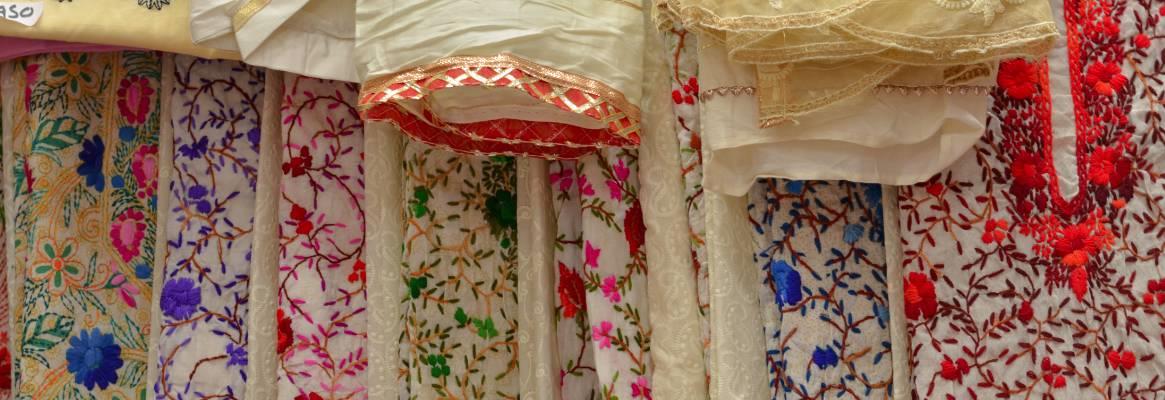The article traverses the journey of Chikankari through ages and its current day persona.
The splendid creation of Chikankari has been a sensation since ages and comes in all forms of colours, motifs, price range and varieties. This pretty, delicate, and lightweight form of Indian embroidery usually comes in the form of floral embroidery and makes summer dreams come true for Indian women.
The age-old embroidery is still new, up-to-date and appealing when it comes to adding some ethnic vibes to your festive wear. Chikankari was traditionally done on fine cotton or linen fabrics but now the crop tops, lowers, ethic one pieces and even trousers have the taste of this pure traditional embroidery style from Lucknow, India. Let’s delve deeper into this best-known textile from the city of Nawabs.
The Origin
It is said that this intricate and dainty art had its first version in the form of white over white and was part of the traditional craft brought to the country by Persian nobles in the 17th century. The Mughal emperors who brought Chikankari to India used to impress their wives with these versatile weaves. Today, Chikankari artisans are found all over India but Lucknow is still said to be the epicentre or hub for this kind of embroidery work.
The weave and the technique
Chikankari is a simple handwork on a piece of fabric, especially muslin and cotton, to make it look rich, vibrant and classy- very much that our modern and edgy garments lack in terms of technique and art.
There are pre and post stages when it comes to completing a design with a Chikankari.
• Pre stage
The initial work involves block printing on the cloth with the help of blue dye (neel in Hindi). Then the cloth is cut for whatever dress it is supposed to transform into.
• Post-stage
Then begins the real Chikankari work where the fabric is made intact with a small plastic or wooden frame and the needle work is then done on the blue colour block patterns or motifs in the preparatory stage. Chain, hem and back are few of the different forms of stitches associated with the exquisite Chikankari work. After the final work, the cloth is washed to remove the stains of the blue ink or dye.
What’s so special about Chikankari?
The unique form of stitch, labour, skills, expertise of artisans and craftsmen is what makes Chikankari so popular and in-demand. The perfection, finish, neatness and the royal appeal that Chikankari offers goes beyond expectations and makes it really hard to find elsewhere in the world.
An ever-evolving trend
Colour, motifs and the varieties of fabric for Chikankari are what make people and the fashionistas embrace this tradition and culture for their fine range of garments. The technique and the art that started with white on white, muslin cloth and just for salwar suits and kurtis, have surprisingly become trendy, cool, modern and edgy in nature. As for fabrics, cotton, silk and organza too are used with Chikankari work. Colours go beyond white with the introduction of pastel, vibrant to darker hues. Earlier used only on desi outfits like kurtis or salwar kameez, today Chikankari is also found on sarees, anarkalis, ethnic trousers and more. Infact, Chikankari has also found its way to home furnishings including cushion covers, table cloths, blinds and bedsheets.
Indian designers, craftsmen and artisans leave no stones unturned to keep the popularity and speciality of this cultural weave alive and uplift it with the process of designing, engraving, block printing till it goes for washing and finishing.








Comments